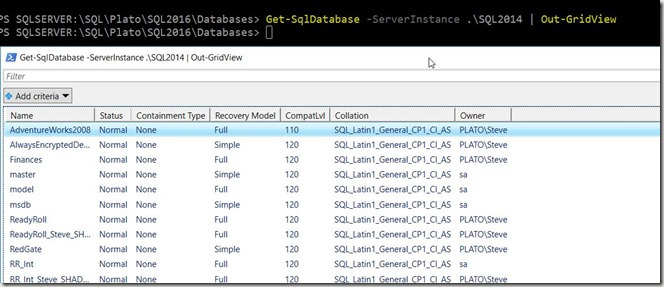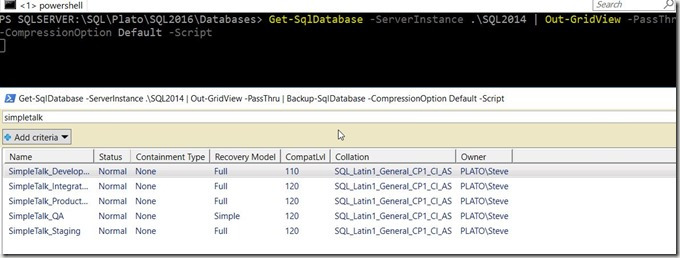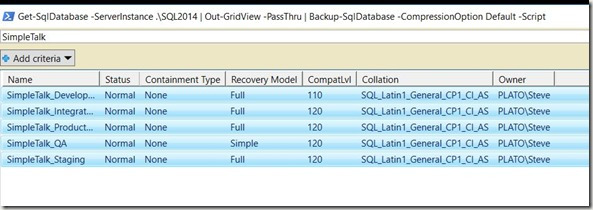Another post for me that is simple and hopefully serves as an example for people trying to get blogging as #SQLNewBloggers.
I was editing an article on PoSh and learned something cool. I can use Grid-View to surface an object in a pipeline and then change the items passed through to the next command.
Here’s how it works. Suppose I have a simple comment, like Get-SqlDatabase. I can run this and get a series of database. (command and output shown here).
Get-SqlDatabase –ServerInstance .\SQL2014
I get a bunch of data, but I don’t want all the items. For example, maybe I just want the “SimpleTalk” databases.
Get-SqlDatabase -ServerInstance .\SQL2014 | Where-Object { $_.Name -like ‘SimpleTalk*’}
I don’t want to edit this Where-Object clause all the time. I want something simple to easily fix this.
Enter Out-GridView
Instead of changing my filter, I can do this graphically. I can pipe my output to Out-Gridview, and I’ll get this.
All of my output data appears. No big deal, right? Is this useful? It sure is. Look at the filter item above. I can type in there, and my data is filtered.
How can I use this? Suppose my code is this:
PS SQLSERVER:\SQL\Plato\SQL2016\Databases> Get-SqlDatabase -ServerInstance .\SQL2014 | Out-GridView -PassThru | Backup-SqlDatabase -CompressionOption Default –Script
Here I’m getting a list of databases, passing them to Out-GridView, and then sending the results to Backup-SqlDatabase, which will return a script to back up all my databases.
I’ll run this, and then enter a filter in the grid.
I can now highlight all these rows (if that’s what I want).
This time I have an “OK” button in the lower right corner of the grid.
When I click “OK”, my filtered list is returned to the pipeline and send to the backup command.
This is a quick way to work with the parameters in your pipeline in an ad hoc way. Use Out-GridView to filter and select the rows you want to return to the rest of your script.
Filed under: Blog Tagged: powershell, SQLNewBlogger, syndicated
![]()










